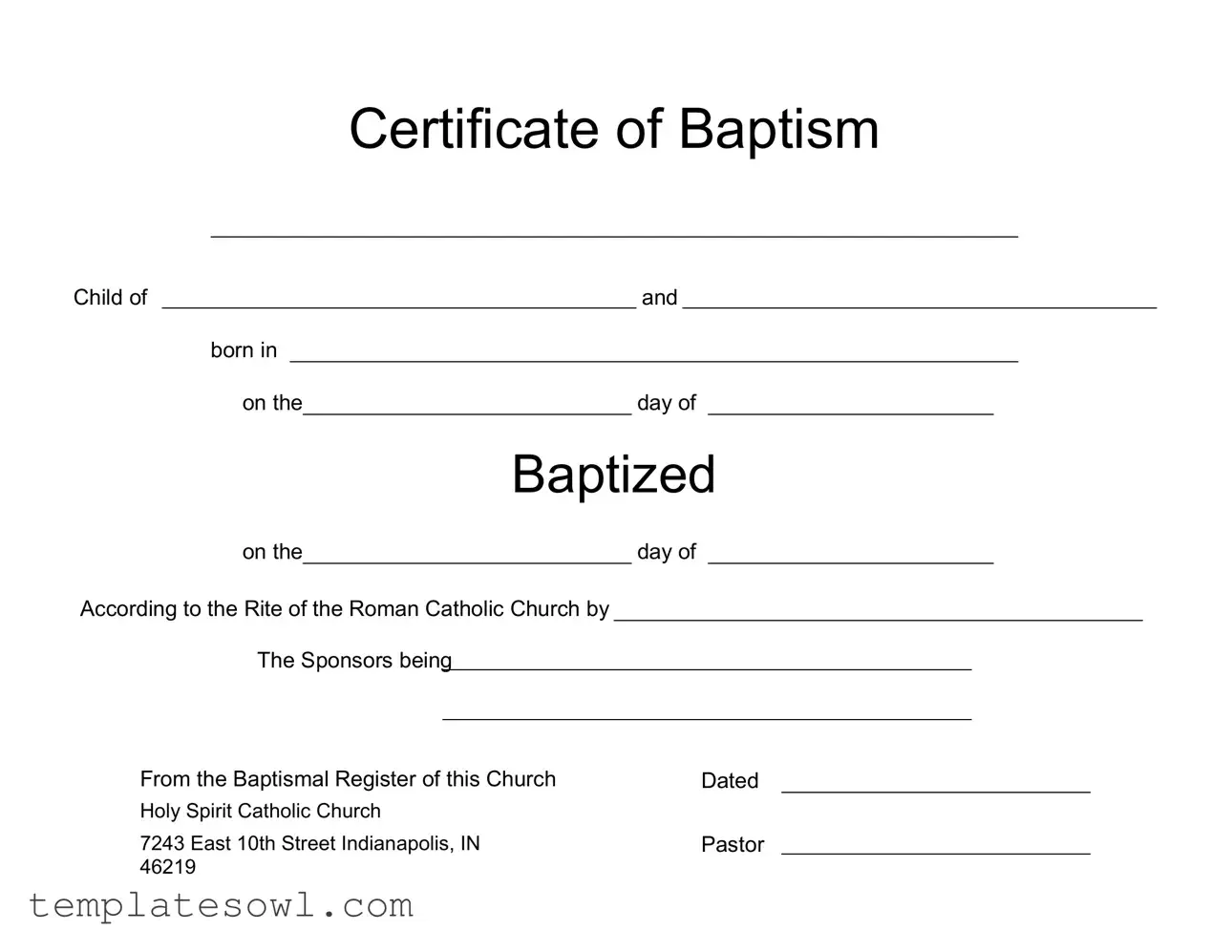What is a Baptism Certificate?
A Baptism Certificate is an official document that verifies an individual's baptism in a specific church. It typically includes details such as the name of the person who was baptized, the names of the parents, the date of birth, the date of baptism, and the church where the baptism occurred. This certificate can be requested for various purposes, such as confirmation, marriage, or other religious observances.
How can I obtain a Baptism Certificate?
To obtain a Baptism Certificate, you need to contact the church where the baptism took place. You may need to provide specific details such as the full name of the person baptized, the names of the parents, and the approximate date of the baptism. Some churches might require written requests or may ask for identification to ensure the privacy of the records.
What information is included in the Baptism Certificate?
A typical Baptism Certificate will include the full name of the child being baptized, the names of the parents, the date of birth, the date of baptism, the name of the officiating priest, and any sponsors or godparents. Additionally, it will usually indicate the church where the baptism took place and may discuss that it is recorded in the church’s baptismal register.
Is there a fee for obtaining a Baptism Certificate?
Some churches may charge a small fee for issuing a copy of the Baptism Certificate, especially if it involves research in the records. However, many churches do not charge a fee, seeing it as part of their ministry to assist families. It’s advisable to inquire when you request the certificate.
What if I cannot find the original Baptism Certificate?
If the original Baptism Certificate is lost or misplaced, you can still obtain a copy from the church. It is important to provide as much information as possible about the baptism to facilitate the search. If the church is unable to find the record, they may suggest alternative steps or records that might serve the same purpose.
Do I need a Baptism Certificate for other sacraments?
Yes, a Baptism Certificate is often required for other sacraments in the Roman Catholic Church, such as Confirmation and Matrimony. If you plan to receive these sacraments, your parish may ask for a copy of your Baptism Certificate to verify that you were baptized within the Church.
Can I obtain a Baptism Certificate if I was baptized in a different denomination?
If you were baptized in a different denomination but wish to have that recorded in the Roman Catholic Church, you can still request a copy of your Baptism Certificate from that denomination. Some Catholic parishes recognize baptisms performed in other Christian denominations, provided they were done using appropriate forms and intentions.
What if the information on my Baptism Certificate is incorrect?
If you notice any inaccuracies on your Baptism Certificate, it’s important to address them with the church as soon as possible. Churches typically have a process to amend records. Providing accurate information and any supporting documentation will help ensure that the correction is made smoothly.
How long does it take to receive a Baptism Certificate?
The time it takes to receive a Baptism Certificate can vary. If the church has the information readily available, you may receive the certificate within a few days. If they need to search their records or if the request is submitted during a busy period, it may take longer. It’s a good idea to ask about the estimated processing time when you make your request.
Where is Holy Spirit Catholic Church located?
Holy Spirit Catholic Church is located at 7243 East 10th Street, Indianapolis, IN, 46219. If you need to reach out for a Baptism Certificate or for additional questions, contacting the church directly will provide the most accurate information.

